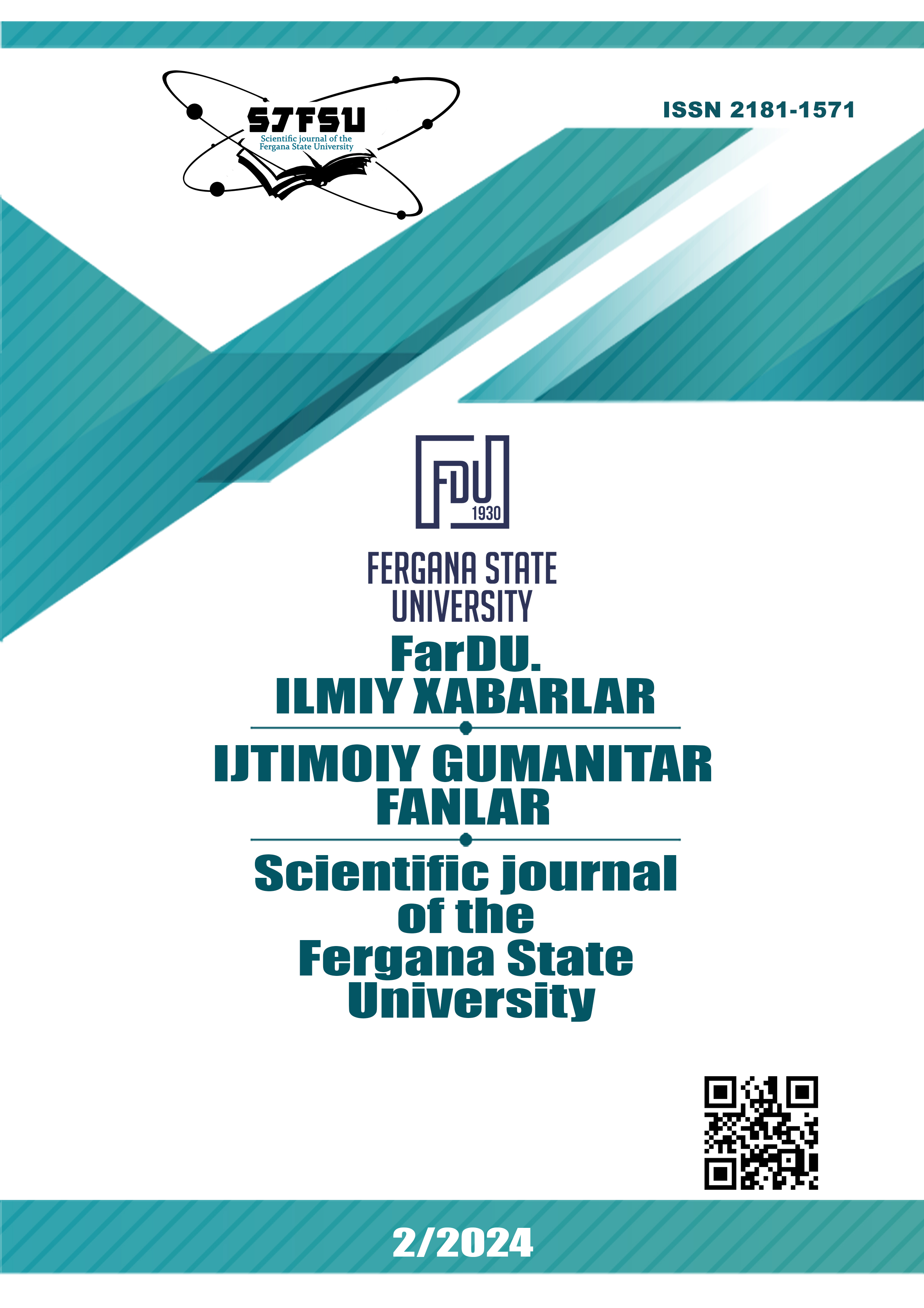PROBLEMS OF TRANSLATIING REALIA FROM UZBEK INTO ENGLISH
Keywords:
culture-bound words, realia, source language, target language, translation strategies, adaptation, compensation, reduction, equivalence, modulation, generalization, word-for-word or literal translationAbstract
This article analyzes the problem of translating culture-bound words and the most preferred methods of translating realia from Uzbek into English. The article discusses types of words that have no alternative in translation, classifications and proposed methods of translating realia. To support the opinions expressed in the article, quotes are provided from the scientific works of researchers. The purpose of the research covered in the article is to study and analyze the means of translating words and phrases characteristic of the Uzbek linguistic culture into English, as well as to determine the most optimal translation methods for carrying out reliable translation. On conducting the research in the article, there were used such linguistic methods as method of linguistic observation and description, comparison and contrast. As a conclusion, the idea of using the most successful and acceptable methods based on a comparative analysis of translation samples in individual cases is put forward due to the fact that it is impossible to create general rules for translating existing realia in the Uzbek language.
References
Catford, J. C. (1965). A Linguistic Theory of Translation. Oxford: Oxford University Press
Denti, O. (2012) Cross-cultural Representations in Tourism Discourse: The Case of the Island of Sardinia / O. Denti. – Aipsa. – 255 p.
Macedo, A.G., Pereira, M.E. (2006). Identity and Cultural Translation: Writing Across the Borders of Englishness: Women's Writing in English in a European Context / A.G. Macedo, M.E. Pereira. – Peter Lang. – 282 p.
Maitland, S. (2017). What Is Cultural Translation? / S. Maitland. – Bloomsbury Publishing. – 192 p.
Malblanc, Alfred. (2019). Stylistique comparée du français et de l’allemand. – Paris: Didier
Newmark, P. More Paragraphs on Translation / P. Newmark. (1998). - Multilingual Matters. – 226 p.
Ochilova, N. U. (2021) Analysis of the translation of anthroponyms in childrens literature (on the example of English and Uzbek folk tales) //Theoretical & Applied Science. №. 2. – С. 155-157.
Ochilova, N. U. (2018). Culture is the bridges that lead country to another nationality //International scientific review of the problems of pedagogy and psychology.– С. 93-95.
Pedersen, Jan (2011) Subtitling Norms for Television: An Exploration Focusing on Extralinguistic Cultural References, Amsterdam: John Benjamins.
Vermeer, Hans (2020). “Translation Theory and Linguistics”, in P. Roinila, R. Orfanos and Sonja Tirkkonen-Condit (eds) Näkökohtia käänämisen tutkimuksesta, Joensuu: University of Joensuu, 1–10
Qodirov, P. (2019). Starry nights: novel/ Bobur. Translators: I.M.Tukhtasinov, U.R.Yoldoshev, A.A.Khamidov. – Samarkand: SamSIFL.-446p.
Qodirov, P. (2018). Yulduzli tunlar: roman. Toshkent: Adabiyot uchqunlari. B.560
Берков, В.П. (2011). Норвежская лексикология, Санкт Петербург: Филологический факультет СПбГУ.
Bлaxoв, C.H., Флорин, C.П. (2012) Непереводимое в переводе /C.H.Bлaxoв, C.П. Флорин. – P. Валент. – 406 c.
Кодиров, П. (1983). Звёздные ночи. перевод: Юрий Суровцев. – М: Сов.писатель,– 486 c.
Downloads
Published
Issue
Section
License
Copyright (c) 2024 Scientific journal of the Fergana State University

This work is licensed under a Creative Commons Attribution-NonCommercial-NoDerivatives 4.0 International License.

